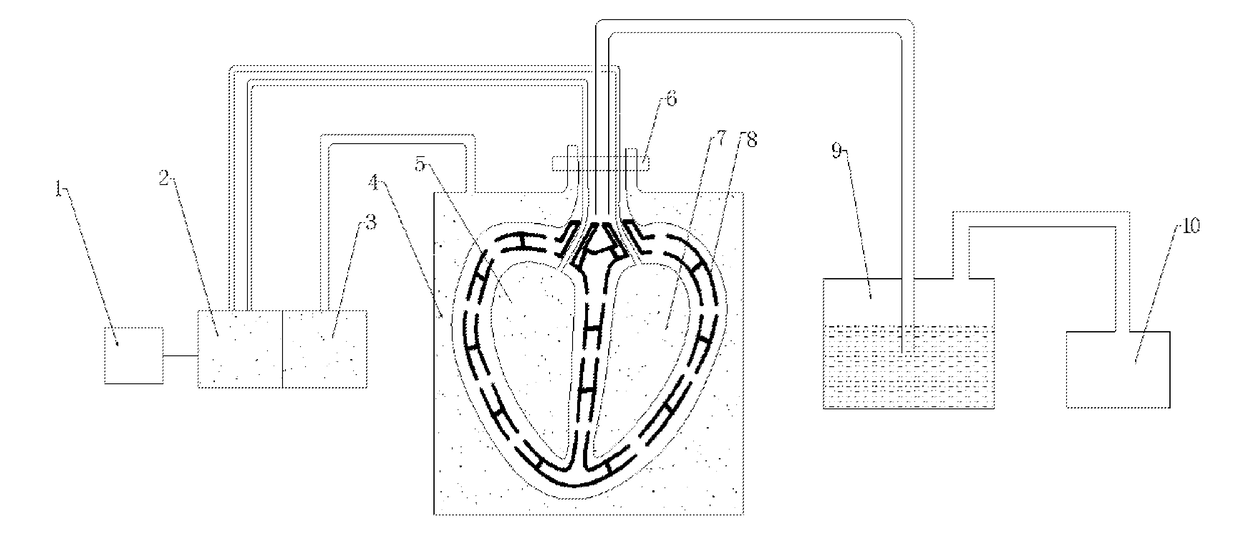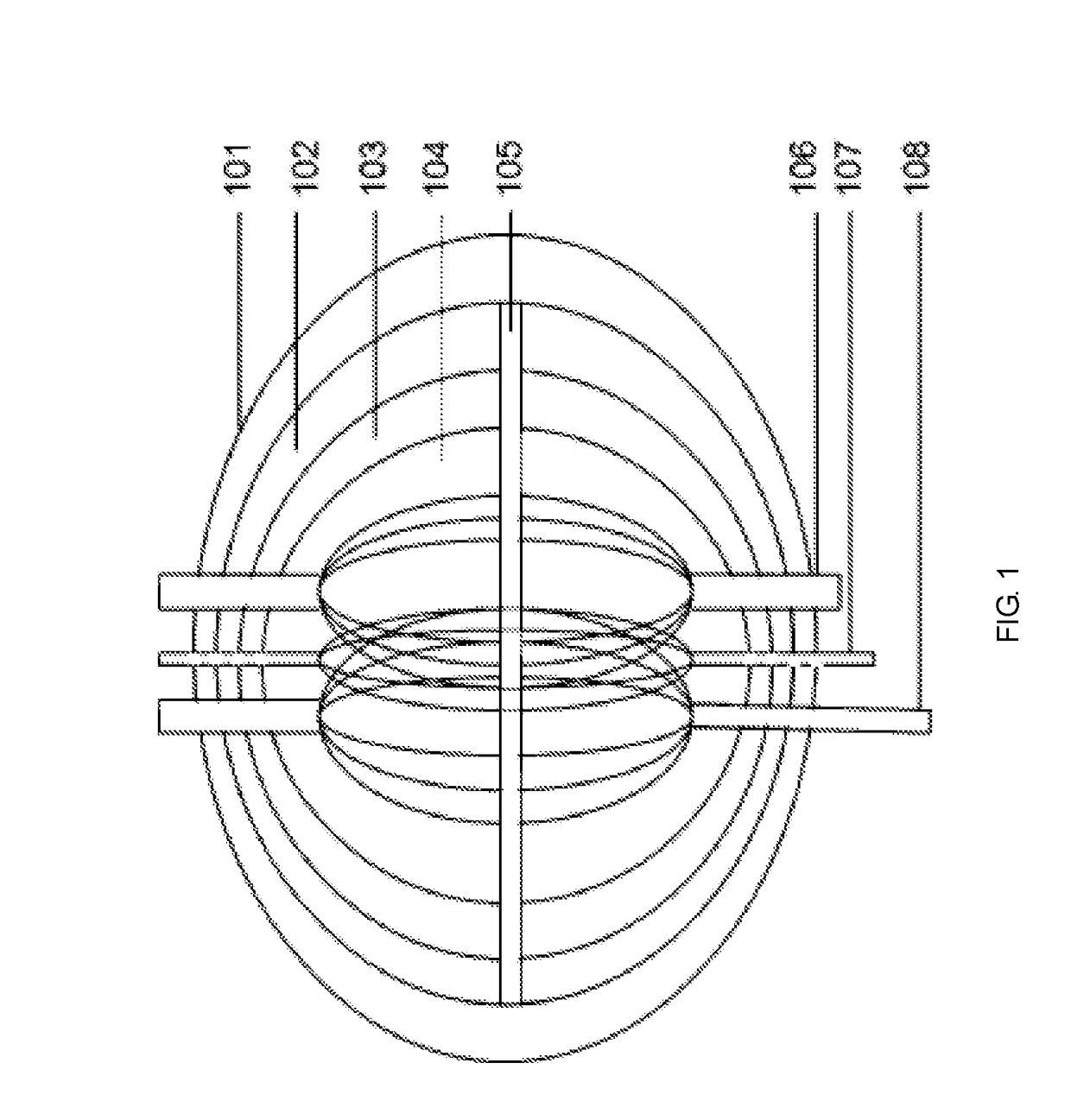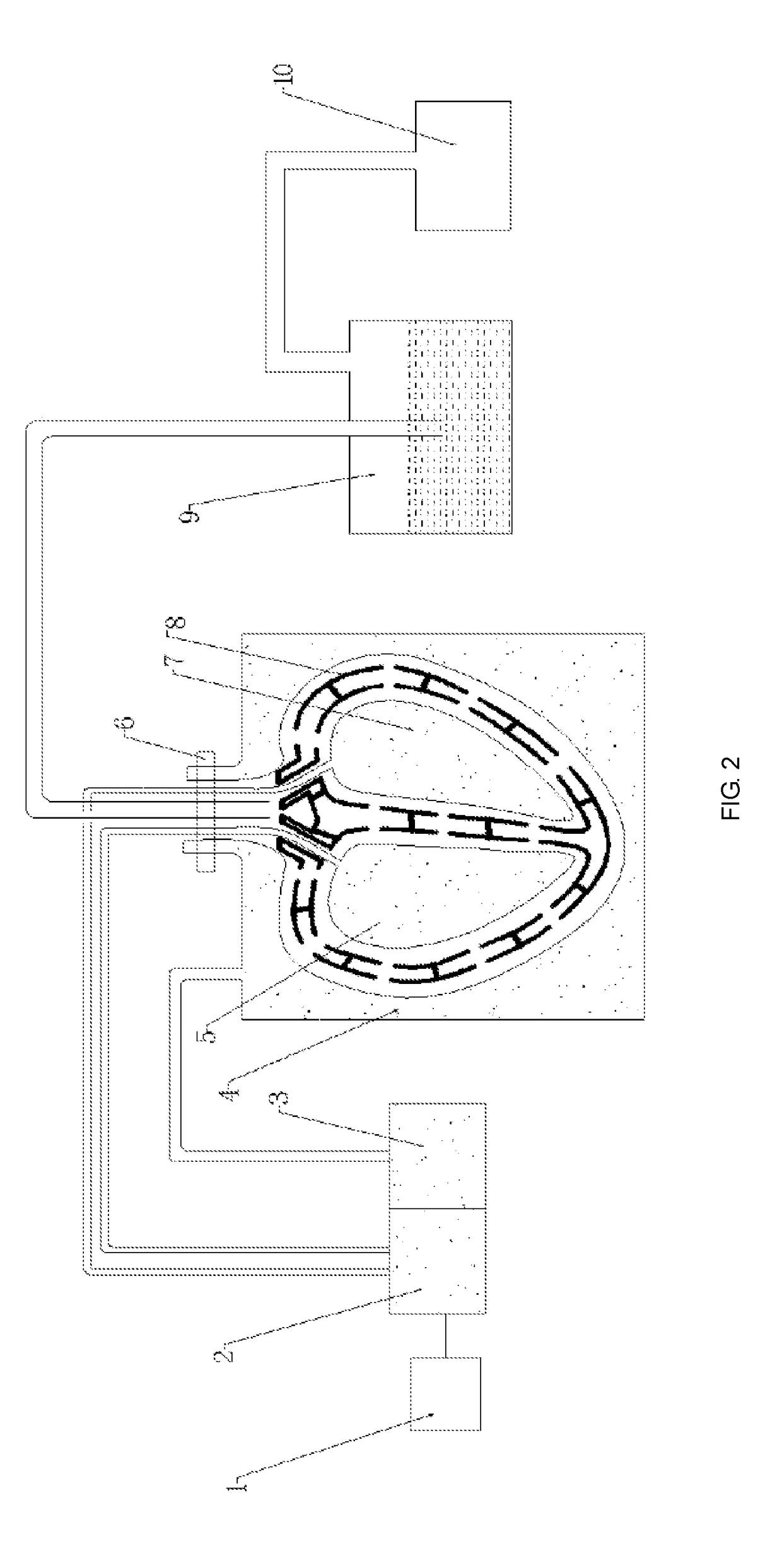Full-function artificial organ fitting body as well as preparation and culture methods thereof
a full-function, artificial organ technology, applied in the field of full-function artificial organ fitting bodies, can solve the problems of inability to prevent further deterioration of patients' diseases, limited living donor tissue organs, and insufficient mechanical apparatus functions, so as to increase the mechanical strength of full-function artificial organs and accurate positioning of different cells and matrix materials.
- Summary
- Abstract
- Description
- Claims
- Application Information
AI Technical Summary
Benefits of technology
Problems solved by technology
Method used
Image
Examples
embodiment 1
ion Artificial Heart Fitting Body as well as Preparation and Culture Methods Thereof
[0079]The preparation and culture methods comprise the following steps:
[0080]a) designing a shape structure, a branch arterial system structure, a branch venous system structure, a branch nervous system structure and a cortex layer structure of an artificial heart respectively by adopting a three-dimensional computer modeling method, wherein the shape of the artificial heart is a “coconut”-shaped three-dimensional structure which is encircled by a smooth curved surface and is large in top and small in bottom; two atria and two ventricles are put into the artificial heart; and each atrium and each ventricle respectively have a nutrition channel connected with the outside;
[0081]b) respectively preparing a fibrinogen solution with a mass percentage of 1%; respectively mixing adult cardiac muscle cells, adipose-derived stem cells and Schwann's cells with the solution, wherein a density of the mixed cardi...
embodiment 2
ion Artificial Atrium Fitting Body as well as Preparation and Culture Methods Thereof
[0090]The preparation and culture methods comprise the following steps:
[0091]a) designing a shape structure, a branch arterial system structure, a branch venous system structure, a branch nervous system structure and a cortex layer structure of a full-function artificial atrium respectively by adopting a three-dimensional computer modeling method;
[0092]b) preparing cortex layer molds with different diameters and a three-dimensional skeleton structure of the branch arterial systems, the branch venous systems and the branch nervous systems by adopting the in-mold pouring technology, wherein the cortex layer molds with different diameters are divided into an upper part and a lower part; and respectively preparing 1% of fibrinogen mixture containing cardiac muscle cells, adipose-derived stem cells and Schwann's cells, wherein a density of the mixed cardiac muscle cells is 103 cells per mL, a density of ...
embodiment 3
ion Artificial Liver Fitting Body as well as Preparation and Culture Methods Thereof
[0101]The preparation and culture methods comprise the following steps:
[0102]a) designing a shape structure, a branch arterial system structure, a branch venous system structure, a branch nervous system structure and a cortex layer structure of a full-function artificial liver respectively by adopting a three-dimensional computer modeling method;
[0103]b) preparing cortex layer molds with different diameters and a three-dimensional skeleton structure of the branch arterial systems, the branch venous systems and the branch nervous systems by adopting the in-mold pouring technology, wherein the cortex layer molds with different diameters are divided into an upper part and a lower part; respectively preparing 1% of sodium alga acid mixture containing hepatic cells, hepatic stem cells, adipose-derived stem cells, Schwann's cells, stellate cells and biliary epithelial cells, wherein a density of the mixed ...
PUM
 Login to View More
Login to View More Abstract
Description
Claims
Application Information
 Login to View More
Login to View More - R&D
- Intellectual Property
- Life Sciences
- Materials
- Tech Scout
- Unparalleled Data Quality
- Higher Quality Content
- 60% Fewer Hallucinations
Browse by: Latest US Patents, China's latest patents, Technical Efficacy Thesaurus, Application Domain, Technology Topic, Popular Technical Reports.
© 2025 PatSnap. All rights reserved.Legal|Privacy policy|Modern Slavery Act Transparency Statement|Sitemap|About US| Contact US: help@patsnap.com



